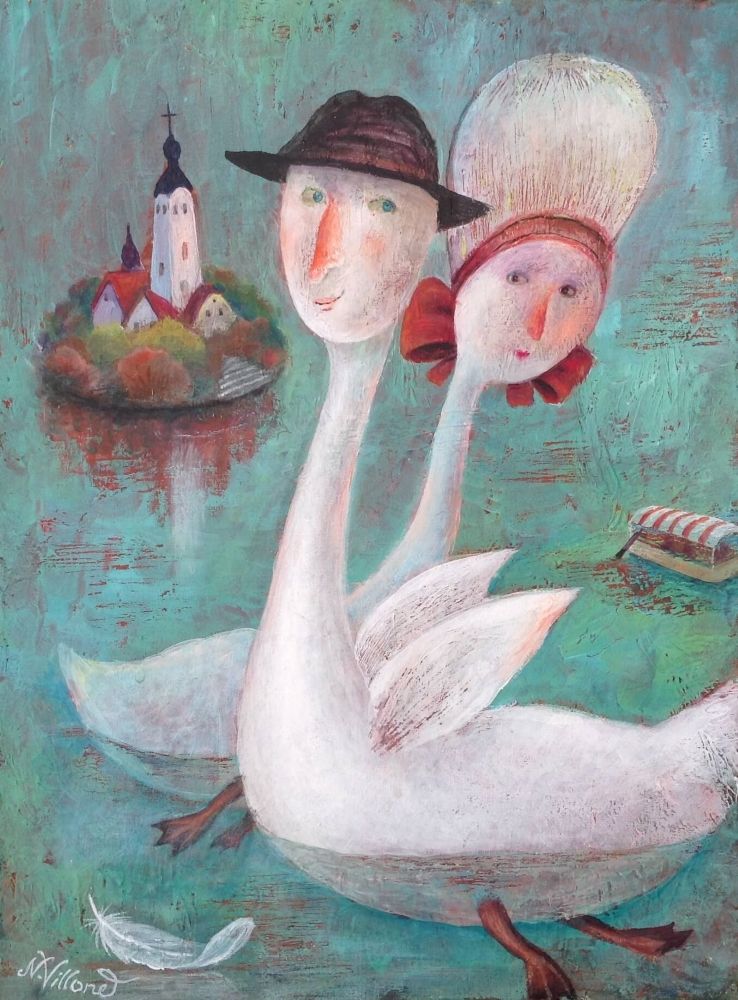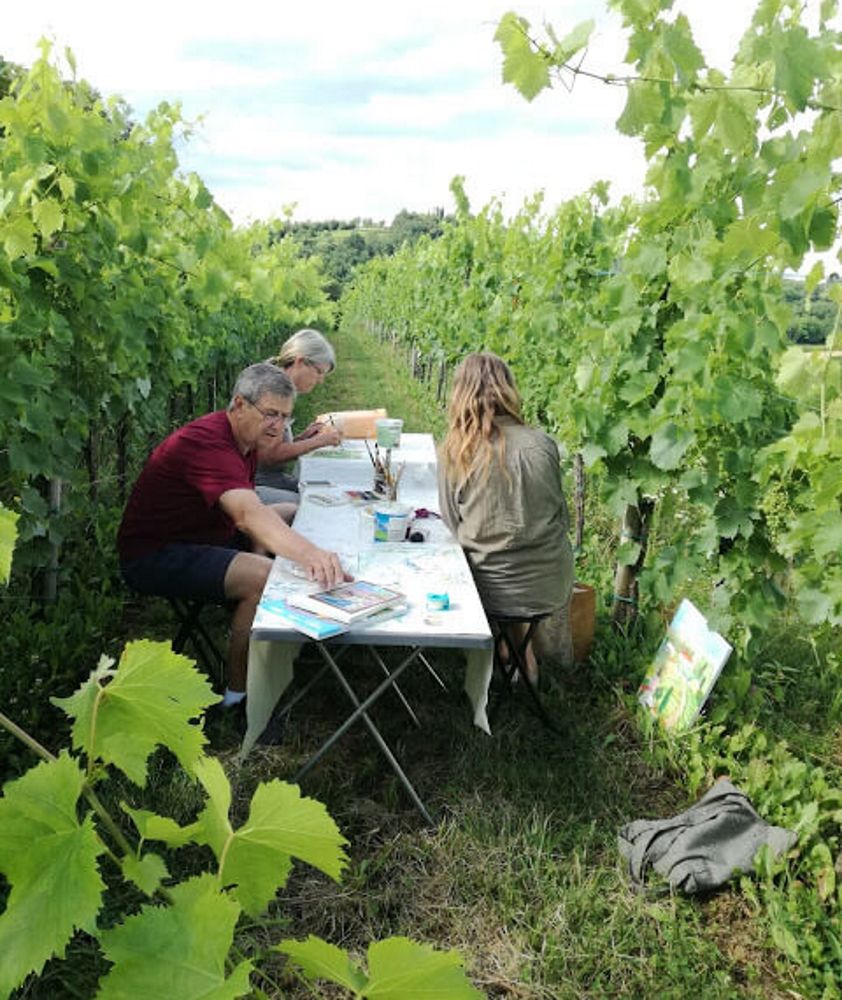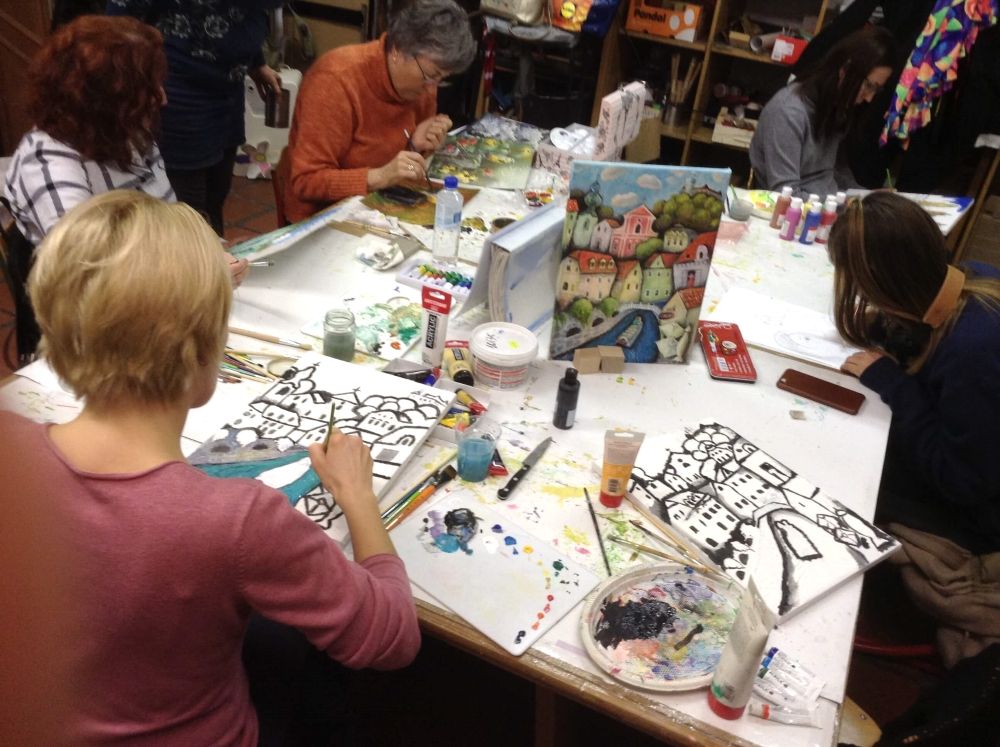Meet the People
If you’re reading this you almost certainly know of Dr Noah Charney, perhaps the most famous American living in Slovenia, who turns up regularly on TV and in print sharing his love of the country and exploring various aspects of its culture, as exemplified in his book Slovenology (2017), a new podcast of the same name, and a list of projects that seems to grow by the week. We thus got in touch for an email interview, with the focus on how he’s been able to settle so well, and so quickly, in his new home.
What brought you to Slovenia?
Love, which I believe is the primary import. I had dated a Slovenian girl when I was living in London and had come to visit on some holidays and try to learn the language a bit. Later on when I was studying at Cambridge but had ants in my pants and wanted to try living in various European countries one of them I went to was Slovenia. I lived here for a few months and during that time wound up deciding to transfer to University of Ljubljana to finish my Ph.D and I met my current wife as well as sold my first book all at the same time. It seems like Kismet.
How long after you arrived in Slovenia did you start studying the language, and what was the nature of these early efforts?
I tried memorizing some phrases and some of the basics before I actually moved here but to be honest I didn't learn much of anything and I never actually took a course in it until I started speaking with my mother-in-law. That was the best education. I still have trouble with grammar, and just about every sentence has a grammatical error in it. I never bothered memorizing the declensions, for example. But I speak fluently and quickly even with my mistakes and at least so far people seem to think it's cute. I'll ride that wave as long as I can.
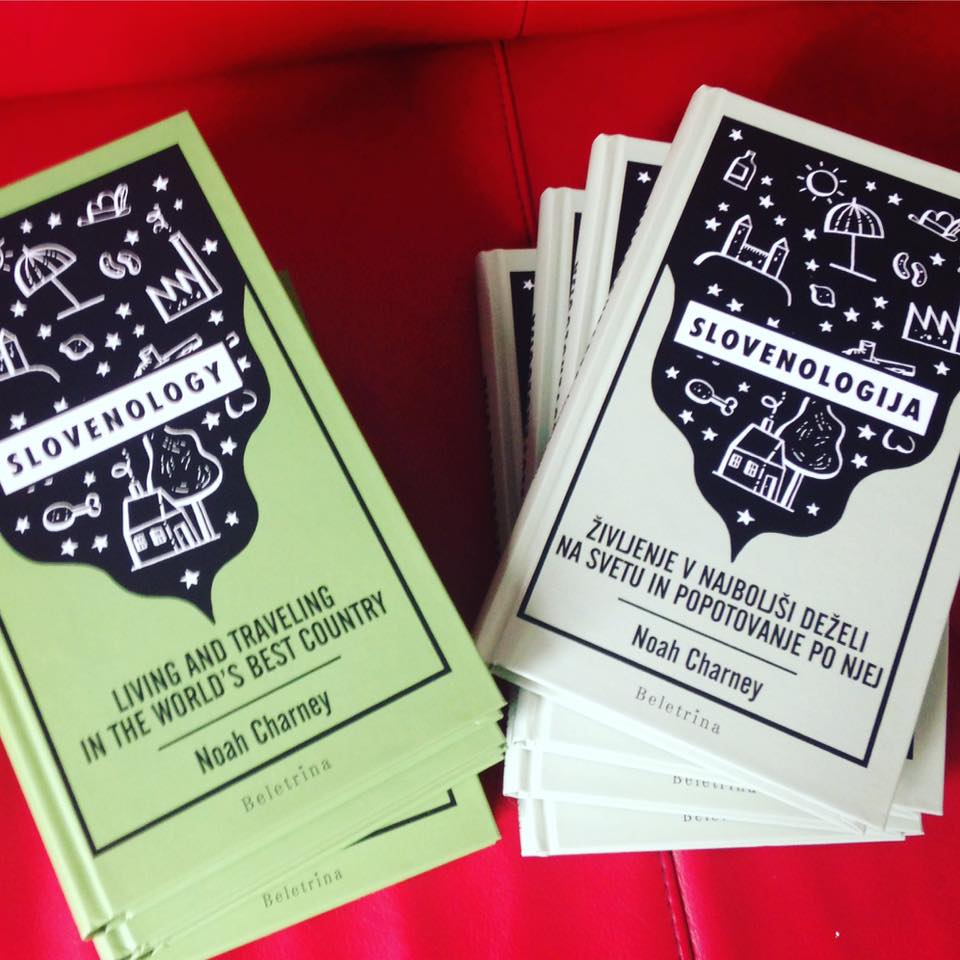
An ebook version of Slovenology can be found on Amazon, while print copies are available in Slovenia
Have you ever engaged in a formal study program for the language?
No, nothing at all. I really should but what I need to do most is just take time to sit down and memorize declension endings and that would serve me well. But I keep on feeling like I don't have time to do it. I've certainly plateaued and could live my whole life here at this level without improving. That would be a bit of a shame, I think.
How do you feel about your level of Slovene now, and what do you do to improve it?
I'm entirely comfortable with my level of Slovene. A few years ago I began to host events in the language and make jokes in it and feel like I was my own normal personality even in this language. I'm not bothered at all if I make frequent grammatical errors. I would rather throw myself in and hope for the best. At this point I've almost made a positive personality trait out of speaking with funny inadvertently idioms. I host events regularly even do TV work in Slovenian and I've been told by many people that it would be a shame if I speak too much more correctly because there is a charm to my current level. If that's what they think sounds good to me
How did you build your personal and professional networks here?
I have no particular interest in meeting expats, especially Americans. That doesn't mean that I'm avoiding them but I'm making no effort to meet them as I'm most interested in meeting locals. That said, I had a strategy when I first moved here. I am a writer and occasionally write for magazines and newspapers so I have the ability to present people to the media and give them exposure to anglophone readers which Slovenians consider a plus, a bit out of the ordinary and something desirable. I used this to my advantage early on, as I wrote to various people. Because I admired their work, from rock musicians to comedians to actors to writers, and I asked if I could meet with them for an interview. About a third of the people I met became friends and the rest of them were useful contacts to have in a country with probably just a few hundred people living and working in the literary and cultural and arts sphere, so you meet one and you can easily meet the others. This was an intentional tactic that worked out well for me, and it has led to lots of collaborations with big names here. It also makes for a weird situation where I met really famous celebrities long before I met normal people.
How was finding paid work in Slovenia?
I am lucky in that I work as a writer primarily, and so my work is portable. It is probably the best of all to be working for American and British Publishers and publications and living here. But in the last few years I have done much more work locally. The work that I am asked to do most is in terms of hosting events and giving talks mostly about my perspectives as an American in love with this country, and noticing quirks and differences in the cultures that Slovenian find funny, and they especially appreciate the fact that I really do think this is the world's best country to live in, which often surprises locals.
I also find a lot of work writing text in English for Slovenians and Slovenian companies and editing text that was written by non-native speakers or translated into English by the same. I could probably do this sort of thing full-time but I wind up doing it part-time so I have the opportunity to do my own writing.
For anglophone foreigners using our language abilities is probably the most immediately desired thing, as just about every Slovenian company with any outward facing exposure needs to have texts in English and someone to either write them or proof them. There is also a real interest in collaborating with anglophone expats who are invited for consulting on rules for local projects, because they provide insight and a different perspective. So actually think there are ample opportunities. However, one should be aware that work tends to pay less here than it would in other countries, but the quality of life comes at a lower price here so it all balances out.
Culture shock is a well-studied phenomenon, moving through the stages of honeymoon, frustration, adjustment and acceptance. What has been your experience of culture shock in Slovenia?
I didn't have culture shock because my goal was always to live in a European country. I was not particularly interested in living the American lifestyle. So I am seeking out new cultural experiences, not hiding from them. The cultures are not so different here from what I'm used to in the eight different countries I've lived in. They're usually little details like grace notes that stand out to me, but nothing that would constitute shock. Maybe drinking schnapps for breakfast is one.
Are there some aspects of Slovene culture that you took to immediately?
I like pretty much everything and I'm particularly delighted to adopt local traditions. I'm totally into copati [slippers]. The American habit of wearing shoes outside and in seems weird to me now. I prefer living in a second language as everything is a bit more interesting. I'm excited to go to the supermarket for instance every time I go. Just different enough to be intriguing and moderate exotic.
Are there some aspects that remain challenging?
Really not at all. I feel completely at home here and did right from the start. I think the most important thing for me was achieving a comfort level with the language which allows me to interact with anybody. It is very easy to live in Ljubljana and speak only English, but once you get outside of the capital and if you want to talk to people of older generations or in more rural settings it helps a lot to speak Slovene.
What is something American you'd like to see adopted in Slovenia?
I'm not the biggest fan of America, so I'm not sure there's anything that Slovenia can learn from it. I guess I miss American breakfast traditions, but I can make those myself. If someone could work out the time zone differences so I can watch Boston Red Sox games live I would be quite pleased.
And what is something Slovene you'd like to see adopted in America?
America could learn a lot from Slovenia. I've written an article about it for the Washington Post and an extended version of the same article appears in my book. I feel like Slovenia has an ideal balance of the best bits of socialism with capitalism and freedom. It's hard to imagine a country that has a better balance, although nowhere is completely utopian.
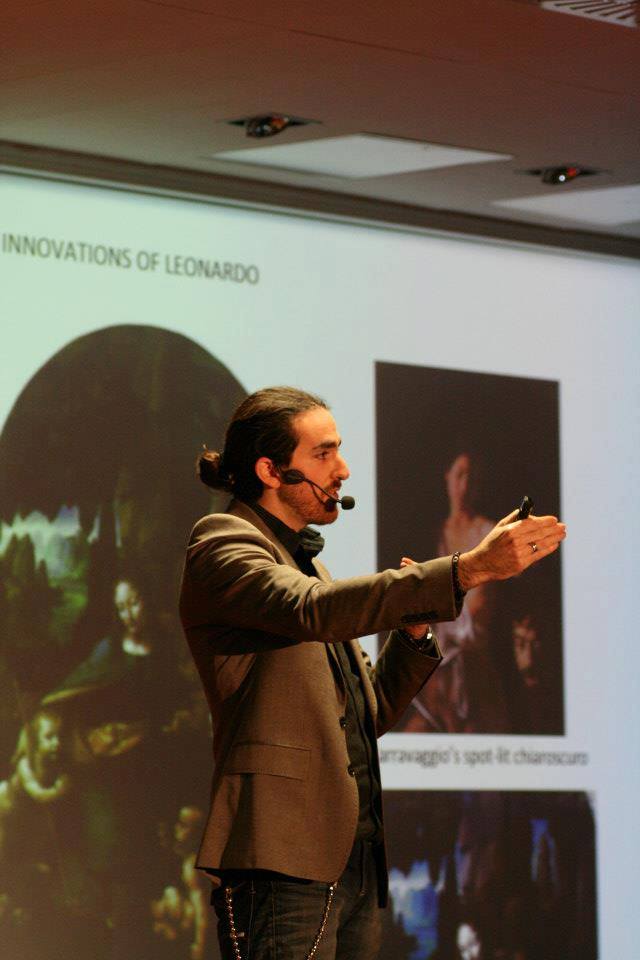
Dr Charney also teaches art crime and art history, as well as writing for publication
2018 was a very productive year for you – what can we expect in 2019?
It's very kind of you to say. Yes, I seem to function only on creative overdrive, and I love starting and finishing projects, so I'm happy to skip the middle bit.
I just launched what will be a weekly free podcast that was sponsored by the US Embassy called Slovenology the Podcast. A new episode will come out every Sunday. I will also shortly be releasing a sort of a sequel to that book but coming out only in Slovenian. It will be called Zvezdologija and feature my interviews with interesting and famous Slovenians. I have been interviewing people here in public events for several years now, and my interviews are very idiosyncratic as most of the people I interview are friends so we tend to be very goofy and loose. So this book will include interviews and also plumb the depths of Slovenian celebrity from an unusual angle.
Anyone interested in keeping track of my escapades is welcome to join me on social media. I also host free of charge public interview events and workshops and courses with some regularity. There are enough of them that it’s best to keep track of my activities on social media or a blog that I'm hoping to update regularly this year at slovenology.co.uk
Do you think you'll stay in Slovenia "the rest of your life"?
I certainly hope to. I have two daughters born here and have never felt more at home anywhere. This is the place to be!
You can try and keep up Dr Charney on various platforms, including Facebook, www.noahcharney.com, www.slovenology.co.uk and www.artcrimeresearch.org. You can also follow the Slovenoogy podcast wherever you get podcasts, with the iTunes link here.
Moving to another country is often a difficult process, as you go through the stages of honeymoon, frustration, adjustment and acceptance, learning how to not just live but thrive in a new environment. Natasha Villone is someone who knows this well, having been born in Orel, Russia, and made new lives in the US and then Slovenia, where she’s now based in Koper and works as an artist – selling her works, teaching and leading art tours. We got in touch with her to learn more about her journey, and she was kind enough to send back some answers.
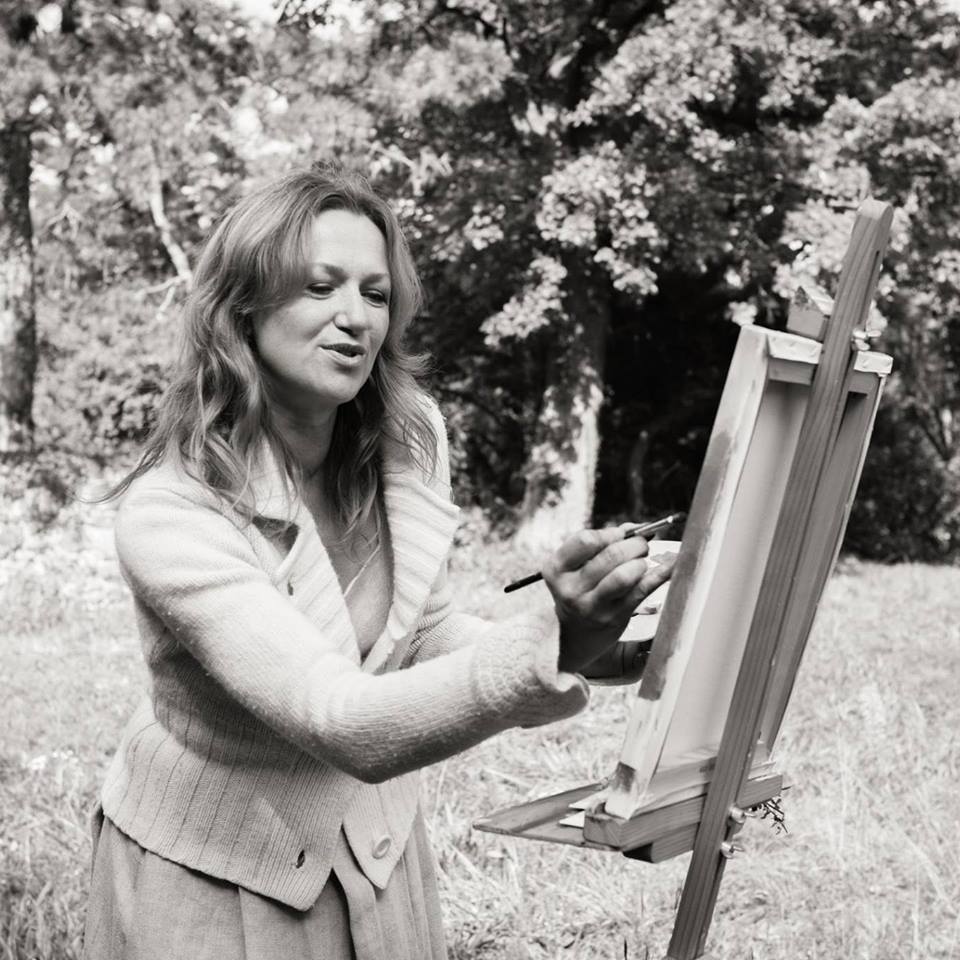
Natasha, painting
You work as a painter. When did you first get serious about art?
Since childhood the easiest and most natural thing for me to do was to paint. In spite of this, when I young, after high school, I wanted to run away from carrier as a painter. But my mom, a very wise woman, secretly signed me up for art collage, where I got diploma in theatre design.
Back then in Russia after me and my classmates graduated we were supposed to work by college referral in some type of village theatre or community club for a minimum of three years. I refused, and in order to stay in a city I took a job at the famous tray and samovar (Russian teapot) factory “Zostovo”. I painted traditional decorative trays with bouquets of roses. Later in my art life I’d use principals which I learned at the factory: volume, perspective, range of colours. But at the time the production line job and constant paint under my nails made me want to be somebody else.
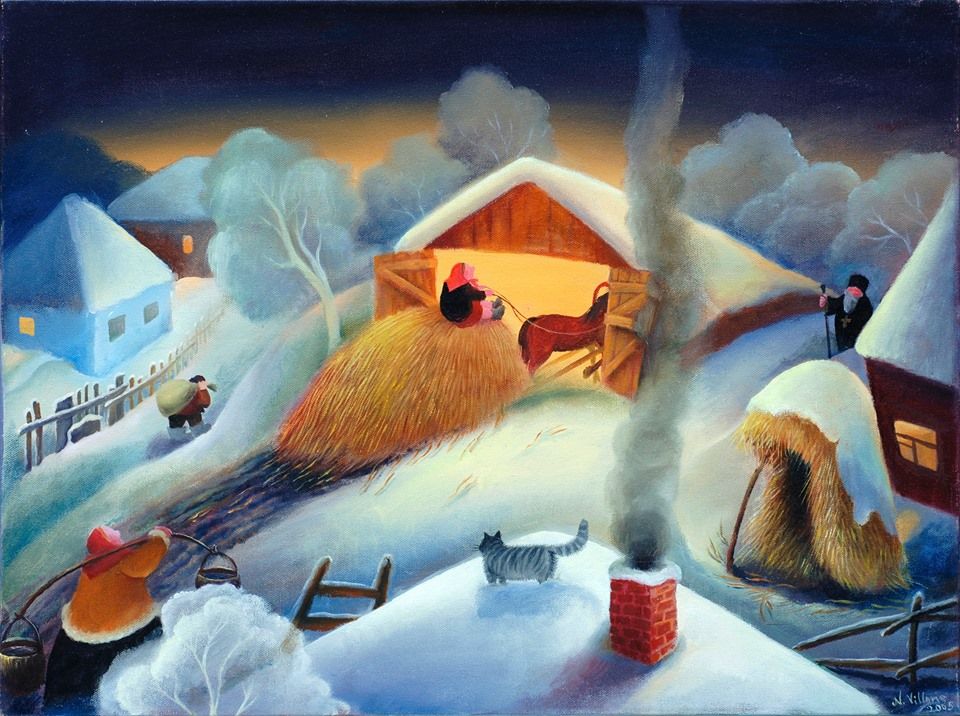
Then the Soviet Union broke apart. Russia was under President Yeltsin everything went upside down with jobs, morality, values. The factory was closed and I was left with no direction. Maybe it gave me push to look for new life abroad.
In 2001 I finally moved to America, Seattle, hoping the grass was greener there. Then in the same year September 11 happened, followed by an economic crisis. I had to do many hard jobs, and wasn’t sure that I could paint again, so I changed direction and tried something different, not just to become an artist.
But ability and desire to create were still inside me. Once at church I heard the pastor say that it’s sin to bury your talent. There’s that story in the Bible about a servant who buries the talents (money) that his master gave him to make a profit on. He was afraid to use the money and so returned it without any gain, but the master wasn’t happy at all. It was this message that pushed me to start painting again.
I’m thankful to my husband Andrew, too, about this. Many times he would walk into galleries, meet the owner, talk about me, and I would have a show there. It’s very important if your spouse supports you, promotes you, or lets you know if you’re not producing enough art, or too much art, and not marketing it well. In this business being a good artist is just 10%, the other 90% is your character not giving up, and knowing how to present yourself to the public.

How did you end up in Slovenia?
While living in America, my husband started running a tourism business in Slovenia. Flying back and forth between the two countries was too hard. I remember one day he said: “Prepare yourself, you have one year, then we’ll move to Slovenia.”
By this time we had two little kids. I was working for good company. My mom from Russia was living nearby and helping with the kids. Art was my second freelance job sometimes in a evening. And now I have to quit my stable job, leave my mom, take kids and follow my husband. Women would not do it, only man could do such a crazy but maybe strategic decision . To be honest, I cried a lot saying goodbye to everything after 14 years establishing my life in America, hoping for some kind of change in our plans.
We finally did it in 2014, and things went smoothly, step by step. We even managed to get on the show “House Hunters International”. God thus made some fun for us, so we wouldn’t be sad just after cutting off our roots in Seattle. People where recognising us from that show for several years, even in Slovenia, so now we know what celebrities feel when they don’t want to be recognised.
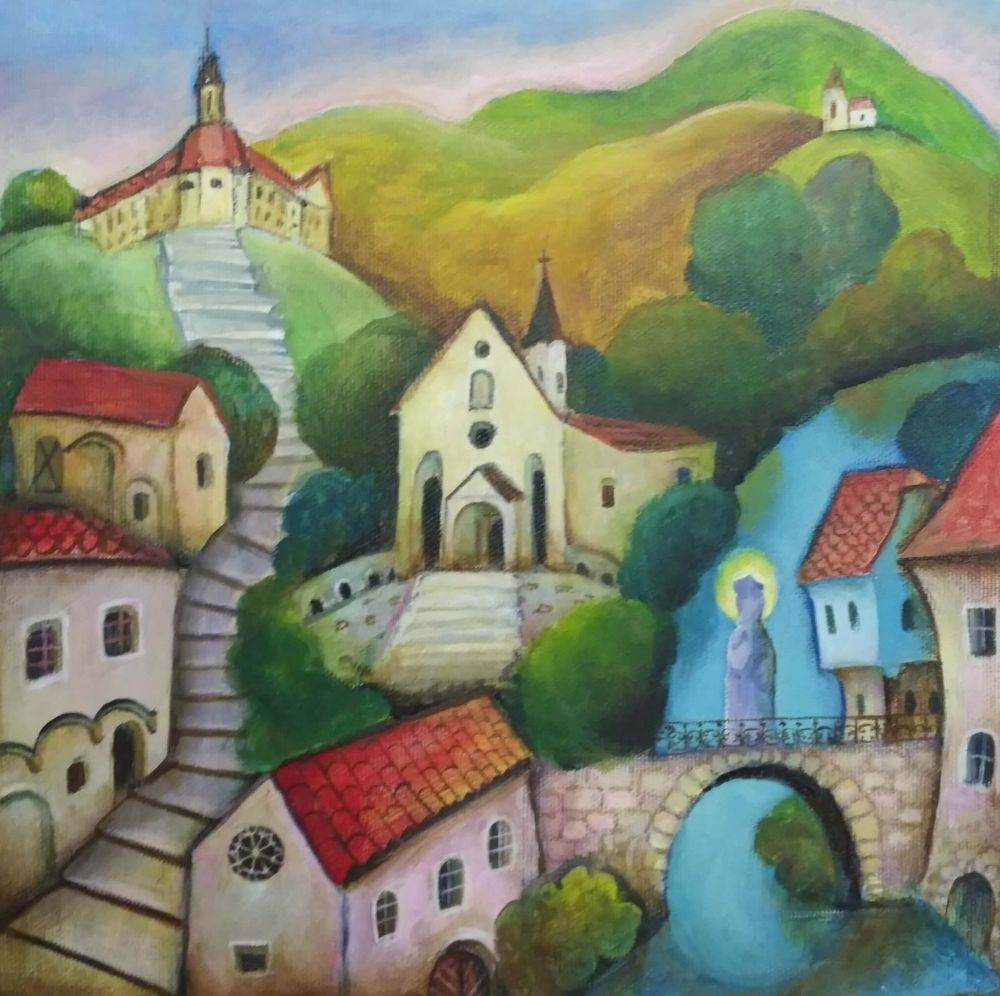
How did you make the move to art here?
In Slovenia I’m wasn’t looking for an office job, because of the language, so art became my priority. Living in Europe helped me travel more, exhibit and sell my art. In 2016 I won the grand prix in the biggest European festival of naïve art, held in Poland. Last year I published my first children’s book Repa velikanka (The Giant Turnip). Perhaps it’s little easier here than trying get lucky with a New York publisher
Unfortunately it’s hard to sell anything in Slovenia, especially art, unless it’s very cheap. But still I’m very thankful to be able to paint. I always tell my students in the adult classes I teach that when you create you never feel lonely or old, you will not be afraid to be left without job, or to retire. It’s like you’re hiding away in a magical world full of new adventures. Yes of course sometimes you struggle, sometimes your idea reveals itself through an image easily. You never know. My only complaint is that I don’t have enough hours in a day to find some extra time to paint among my routine of being housewife with two kids.
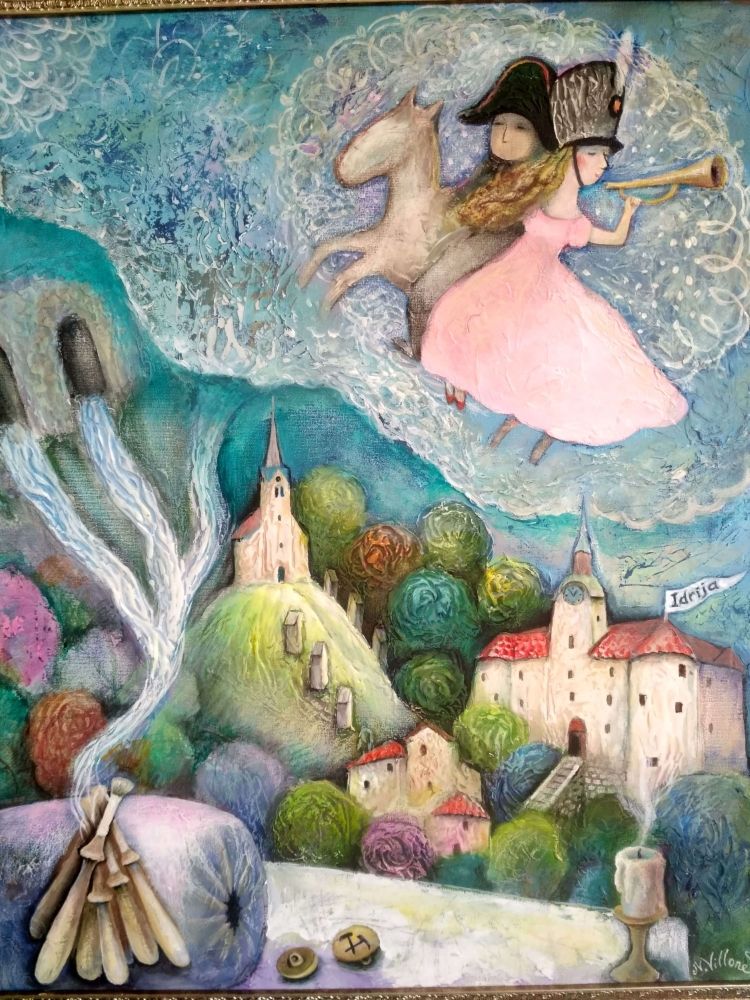
Tell us something about the art tours you run.
As I said earlier, my husband works in tourism, organising food tours of Slovenia, so we started running art tours together. It works perfect between us. He’s the organiser and driver, and then while I’m doing the workshops he’s taking a nap.
We do a seven-day art tour that’s suitable for everybody: from beginners to experienced painters. On the tour you learn a few painting techniques and some tricks from me, so you can create art which looks look deep, textural, and a little vintage.
We choose the most picturesque places to do workshops in the open air. So Lake Bled, the vineyards of Brda, and in Piran, on the Adriatic coast. On a tour we paint, hike, eat homemade food from the local farms, and learn the recipes in a cooking class. There’s also wine-tasting in vineyards, and trips to an olive garden and other farms. You can find out more at my website.
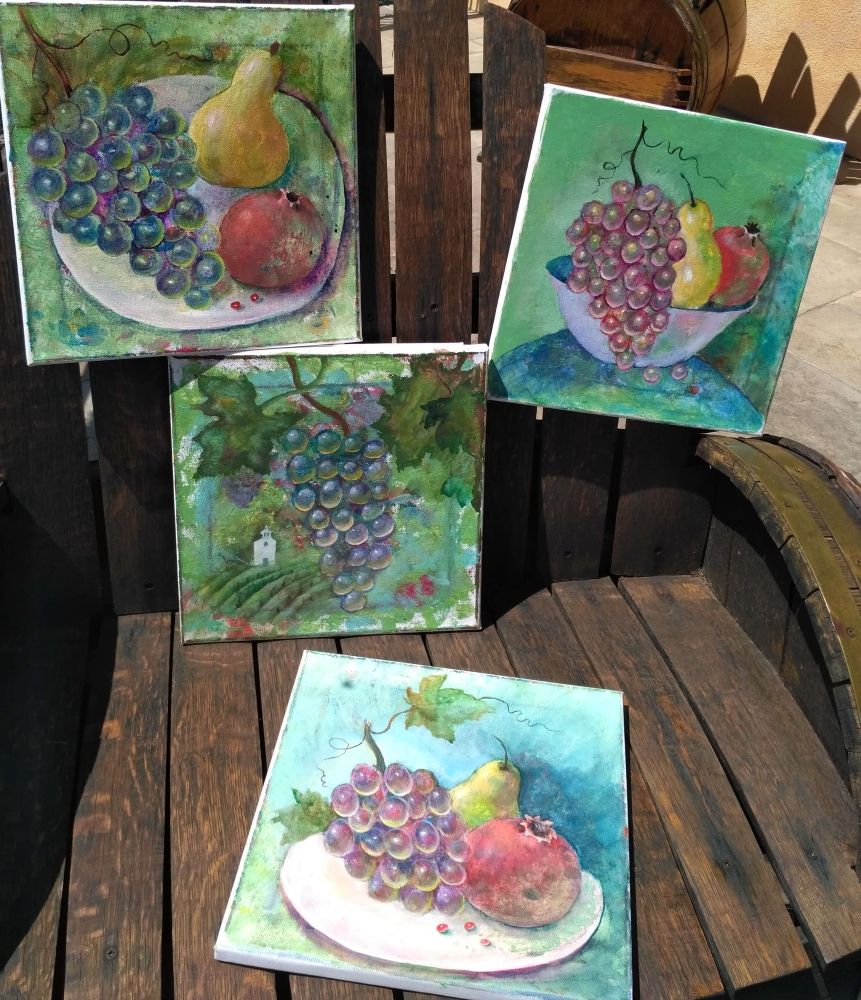
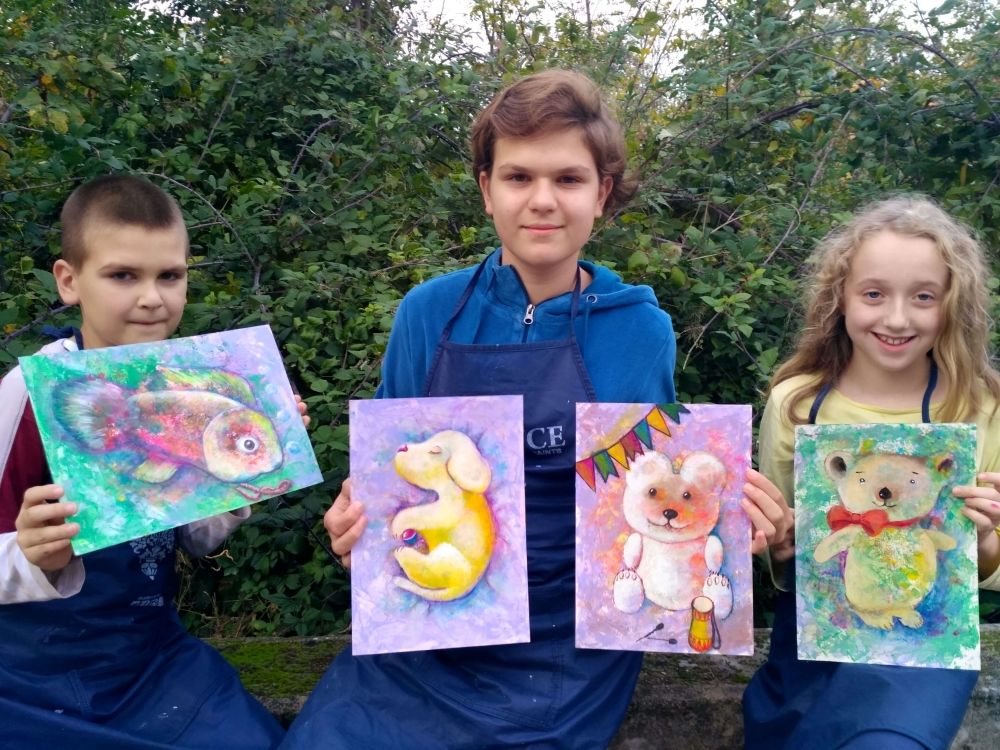
What are your plans for the future?
Nowadays we live in Koper. Watching the sea, boats and cruise ships cheers me up and gives me new ideas for paintings. My hope is to find place and start exhibiting my art in Slovenia this year, so I can invite your readers to a show. Now I’ve been here a few years I’ve painted lots of Slovenian places, like Bled, Ljubljana, Škofja Loka, Idrija and others. My style is what they call naïve. I see things figuratively, symbolically – combining reality with imagination.
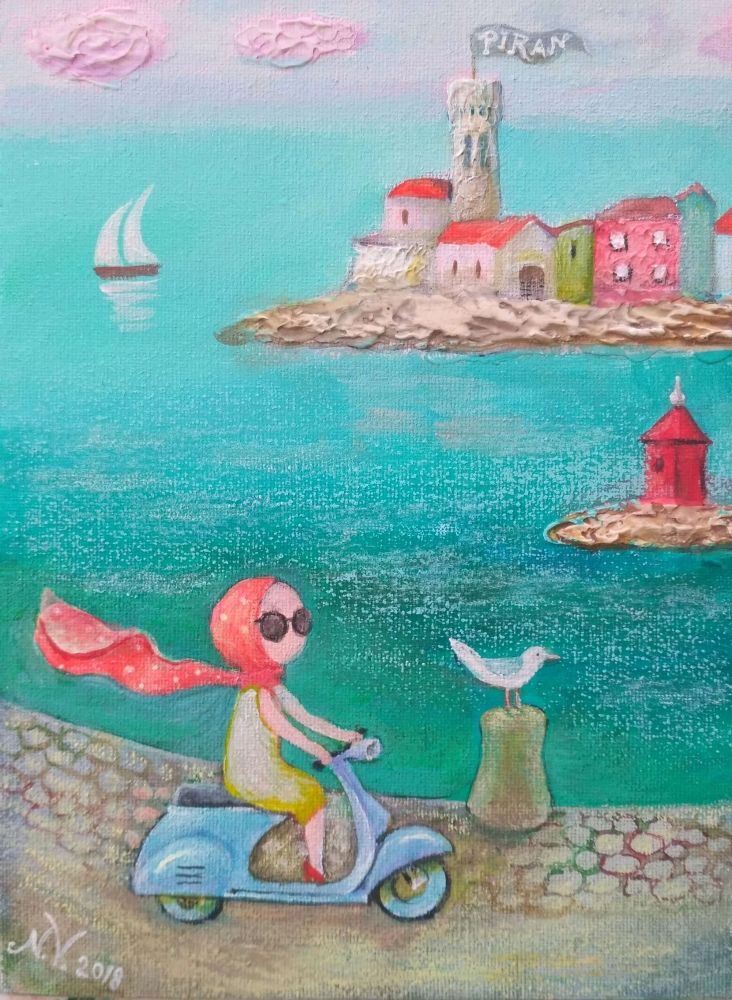
If you’d like to see more of Natasha Villone’s work or learn more about her tours then you can do so on her website, Facebook, or Etsy page, and if you’re in Koper you can sign up for one of her weekly workshops, which happen every Thursday, by sending an email to This email address is being protected from spambots. You need JavaScript enabled to view it.
And if you'd like to share your story with our readers, then please get in touch at This email address is being protected from spambots. You need JavaScript enabled to view it.
The assumed audience for TSN isn’t only English native speakers, but anyone with an interest in Slovenia who can’t yet understand the local media, as well as Slovenes who’re interested in a different perspective on the land they call home. We thus leapt at the chance to visit the Balassi Institute in Ljubljana (Balassijev inštitut Ljubljana - Balassi Intézet), the Hungarian cultural centre not far from Dragon Bridge, to carry out some interviews and learn more about how people from just over the border might see life here.
The first of these, presented below, is with Éva Schwetter, a language teacher who’s lived in the capital for seven years, and is working to enhance relations and understanding between these two neighbouring states.
What brought you to the Institute?
I was as a guest teacher at the university in Ljubljana for six years, but I was also teaching here, so when the university job ended I started working at the Institute most of my time. It opened in January 2016, and I’ve been teaching Hungarian since a few months after that.
Now I have around 30 students in five groups, both at the Balassi and SAZU. Quite often there are researchers, and what they’re interested in crosses over the border into Hungary, and that’s where I can help.
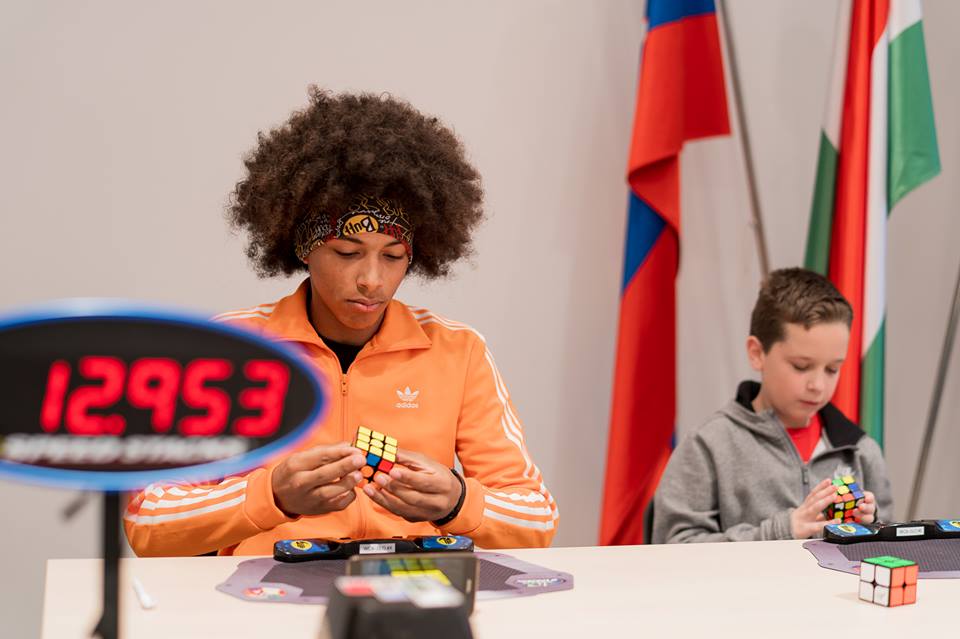
One of the many and varied activities at the Balassi Institute
Who takes the classes here?
We get all ages, and sometimes they’re just interested in the language, but usually it’s because they have some connection, a boyfriend, girlfriend, or maybe some family history with Hungary. So we have classes for beginners, but also for those who already speak good Hungarian and still want to practice and improve.
The classes are open to everyone, although there’s a fee. The first semester starts in October and the second in February, sometimes in March, with a beginners group in each. I teach the beginners in Slovene, but over time, as the students learn more, I use more Hungarian. I have one group who’ve been coming for five semesters, and now it’s almost completely Hungarian.
How different is Slovene to Hungarian?
It’s a totally different language family, Finno-Ugric, so the structures and logic are not at all the same. Hungarian is very logical, but it has its own logic, and it usually takes two or three semesters to get into it.
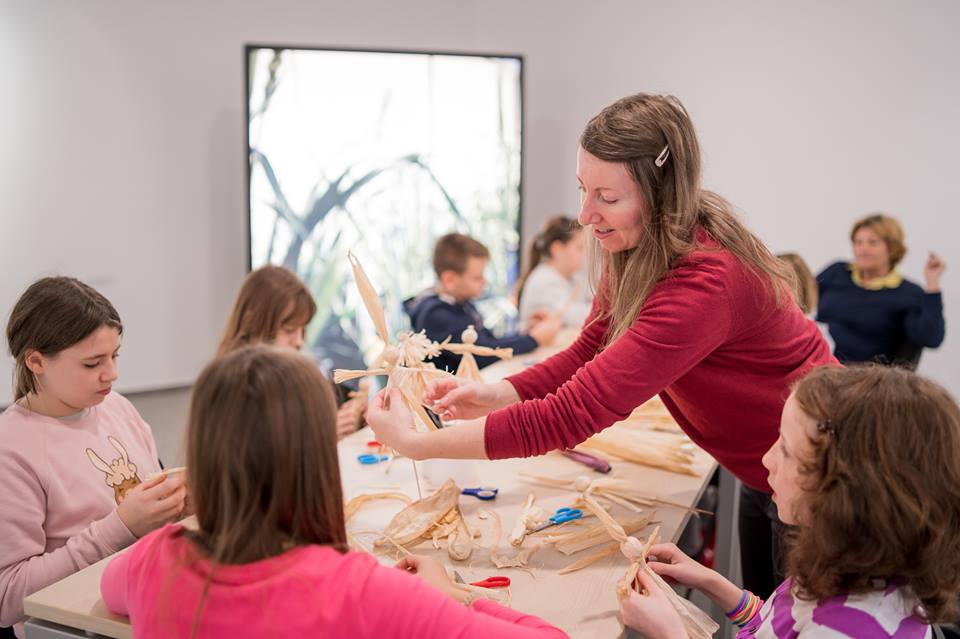
The Balassi Institute
What else is difficult?
Most people say it’s the vocabulary, which is very different to anything they’ve seen before. It’s even different to Finish and Estonian, other Finno-Ugric languages, because they’ve been separate for 3,000 years. So it’s not like Italian and French, but more like French and Persian.
Hungarian also uses a lot of suffixes, and that’s new for most people. What would be a structure in English or Slovenian is one word in Hungarian, but with two or three or four suffixes. It’s like Lego, and you just keep adding things, not taking away.
So in my experience, and that of my students, it’s difficult to start, but then it gets easier, and with the writing it’s written how it sounds. As a written language Hungarian has a long history, going back about a thousand years. First runes, then from around 1000 AD we implemented the Latin script at the same time as the formation of the Hungarian Christian Kingdom.
Has your experience as a learner of Slovene made you a better teacher of Hungarian?
I think so, yes. A lot of Slovenians are scared of Hungarian because of all the differences, but the problems go both ways, and when they see that I can speak Slovene then they know it’s not impossible. At first I spoke very little Slovenian in class, and I told the students to be patient, but they really appreciated my efforts, and it also helped when they faced difficulties in speaking Hungarian. Plus I think the relationship between a teacher and student is helped when both sides see the effort being made.
The new textbook that Éva worked on
You recently worked on the first textbook specifically for this market, Hungarian for Slovenians. Can you tell me a little about that?
Well, after working here for some years I knew the problems that students have with certain things, and that made writing the book easier. So that experience has gone into the book, and of course if something is very similar, or very different, between the two languages we emphasize that. We also focus on the common words. There are about 500 or so of those, which have Slavic roots in the both languages.
Does Hungarian have the dual?
Not like in Slovene, but we do have a special case for when I (first person, singular) am doing something to the second person (singular or plural), like if I see you, I call you, I love you.. And we don’t have gender, so all those declensions don’t exist. There are also things like two conjugations, depending on whether the object of the verb is definite or indefinite – I see the book or I see a book.
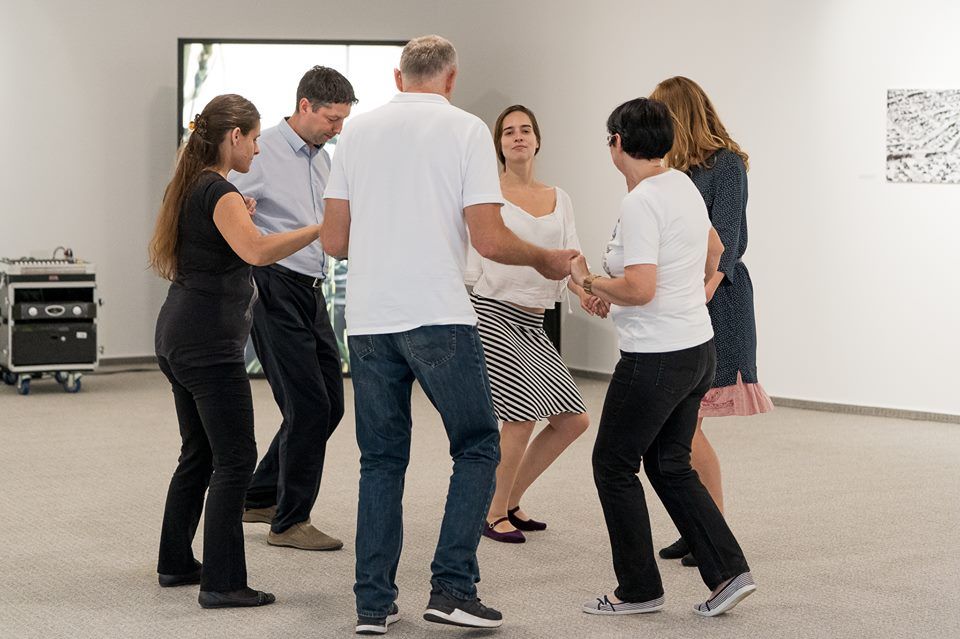
The Balassi Institute
What’s difficult for you in learning Slovene?
For me the gender is difficult, because we don’t have this in Hungarian, and all the combinations of singular, plural and so on, but today I can of course read newspapers, watch TV and give a class.
What surprised you about life in Slovenia?
Ljubljana is a small town, and that was a shock to me, after Budapest. And it surprised me how much people value their private time, so the busiest time on the road is after 3pm, as people leave work from then on. Also, if I send an email in the evening or over the weekend then I can’t expect a reply until they’re back at work, which I respect and understand, but it was still a shock.
I was also surprised by how much English people speak here, especially in Ljubljana. Of course, that makes things easy, but it’s also frustrating when you start using the language, because when you pause and try and think of a word people often just start talking in English.
Finally, I think Slovenes are more direct than Hungarians. For example, when Hungarians send emails they will say a lot, and not just get to the point. But here people will just ask for something, no polite forms, just business. So this offended me at first, but now I think it saves time and I also send these kind of messages.
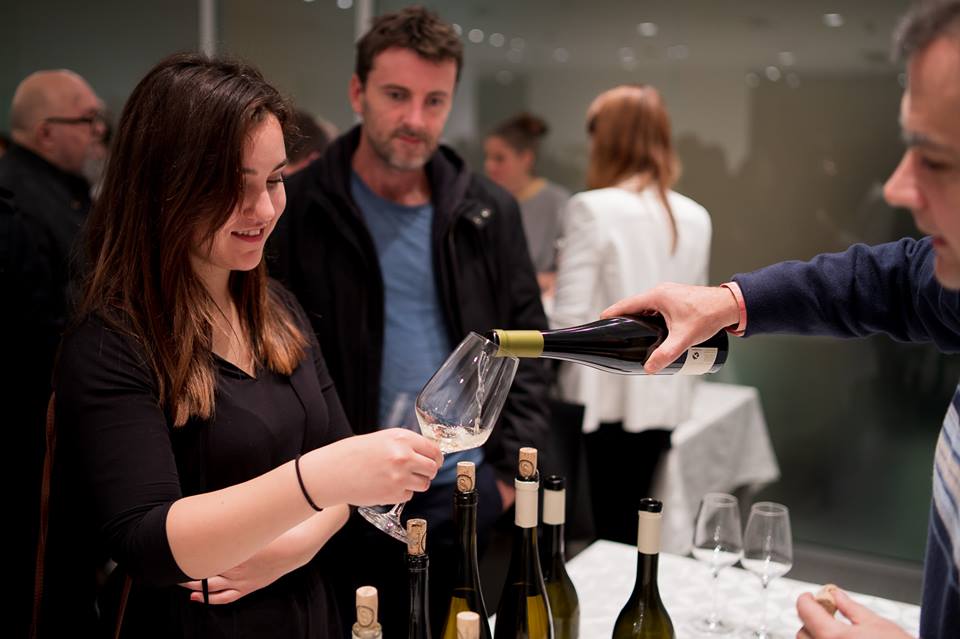
The Balassi Institute
What about food and drink?
It’s really not that different, but we were part of the same Austro-Hungarian Empire, so maybe that’s not so strange, and a lot of the food in Prekmurje is the same as just over the border, with even the famous gibanica being very similar to the Jewish cake flódni, which is well known in Hungary. One thing that’s different, and maybe interesting to your readers, is bograč. In Hungarian this is the thing you cook in, like a cauldron, say, but in Slovenian it refers to the food inside, like a goulash.
Do you think you'll stay in Slovenia?
I love it, I feel integrated, and my life is here. After seven years I can’t imagine leaving, so I want to stay as long as possible. Learning Slovenian helped a lot, of course, because speaking the language opened some doors that had always been closed to me. And Ljubljana, where I live, is beautiful, clean, and friendly. When there’s a problem the attitude seems to be let’s solve it together, and I like that.
You can learn more about Éva Schwetter’s work at the Balassi, and perhaps attend an event if you don’t take a course, by visiting the institute’s homepage or Facebook, or just going in person next time you’re in town.
Exploring somewhere on vacation can often seem like a chore, as you move down a checklist of must-see sights and must-do activities, without really engaging with the streets and the public, lived environment. This is a particular shame in Slovenia, where the pleasures of its small towns and cities are perhaps best enjoyed by allowing yourself to get lost and wander as you move between the prescribed points of interest, safe in the knowledge that you’re never far from the centre. But how to structure such trips to allow for serendipity, discovery and success in terms of a new place known well? How to plan to be surprised without ruining the surprise?
One way is to let someone else take control of the situation, and a novel approach to this can be found in a new venture by three women working out of Murska Sobota, under the name Stride & Seek. We’ll get to the details later on, but for now just know that we were intrigued by the project and sent Hayley Handford-Brown, one of the founders, a few questions about her life and work in Slovenia that she kindly answered.
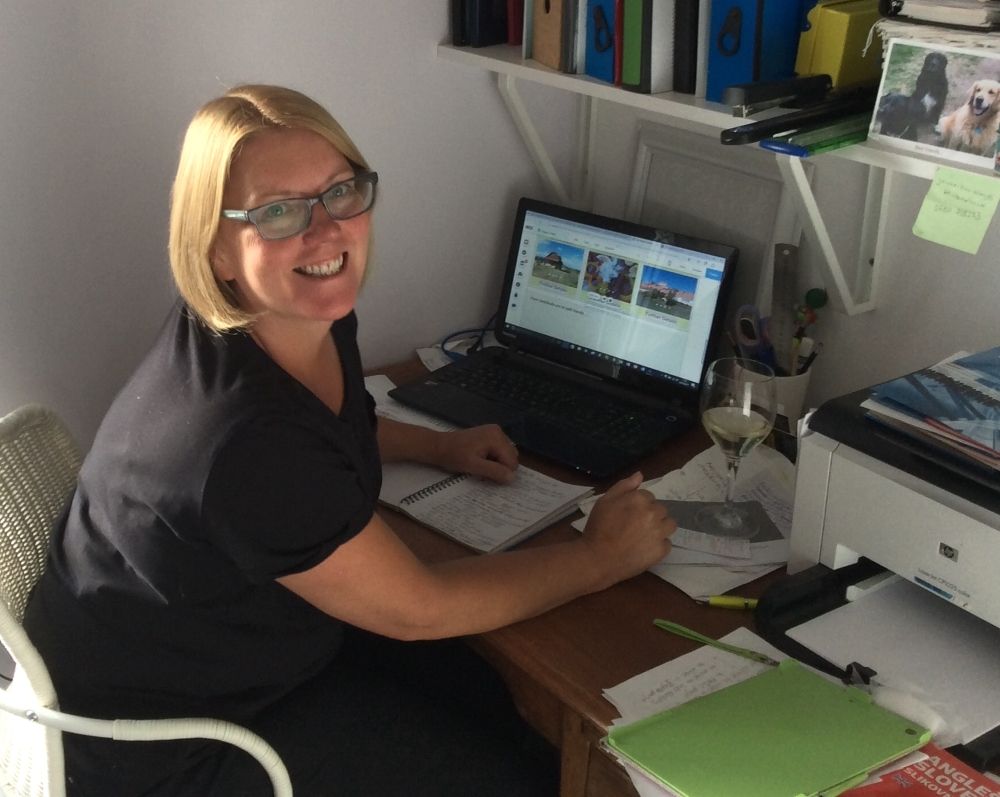
Hayley Handford-Brown
Where you before moving to Slovenia, and what brought you here?
I lived in Lincolnshire, which is fairly rural but quite flat, before coming to Slovenia. So, one of the things that really attracted us to Slovenia was the countryside, and the feeling of getting away from it all that we have here, whilst still having all the amenities you need on your doorstep. I love how safe I feel here and how friendly and neighbourly people are.
What were some of the challenges you faced on moving here, and how did you deal with them?
We actually bought our house here 10 years before we relocated so were well acquainted with the area. Also, in that time, my parents bought a house and retired here six years before we made the big leap. I suppose we had the luxury of time to become aware of any challenges that we may face and made plans for them.
The biggest challenge that we didn’t anticipate was how hard the language would be to grasp. During those 10 years, we visited twice a year, every year but during this period we were renovating either our property or my parents, so didn’t get out and about much and had the mentality that once we lived here, we would learn the language, be so immersed in it that it would come to us. Even though I’ve had lessons and learnt languages before (in fact, I quite like learning languages – it’s something I did at university!) it’s just such a difficult language. And what with one thing and another, haven’t been able to devote as much time as I would have liked to learn it. Oh, and sometimes when you do get the confidence to try and speak it, it’s all wrong and you’re not understood which can be very disheartening!
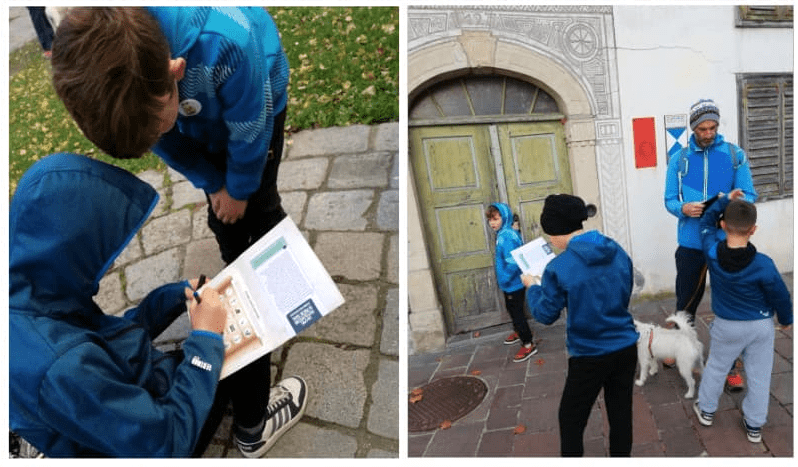
What were you doing here before Stride & Seek?
Stride & Seek Mini Adventures came about after a discussion I had about the concept with an expat business woman, I was picking her brain about something and she just enquired about our future plans. If she hadn’t had asked that question at that point then Mini Adventures wouldn’t be what it is now.
In the UK, we had been franchisees for the leading treasure hunt company, and having been in Slovenia for a while at that time knew that it would be a good concept here, but it wasn’t something I could do on my own – I really wanted Slovene business partners. So, she actually set me up with a Slovene lady she knew that would be perfectly suited, a bit like a blind date for a business partner, and it worked! Katja (the blind date) had a colleague who she brought on board so Tamara joined us and one became three.
The product we offer is pretty different to what I was doing in the UK, which has been great as we have really been able to be creative and imaginative with our Mini Adventures. And we all have different areas of expertise. Katja is responsible for marketing and sales, Tamara writes and translates the Mini Adventures, I write and do the operational side of things, as well as developing any new concepts. We are only at the start of our journey and have lots of exciting things in the pipeline.
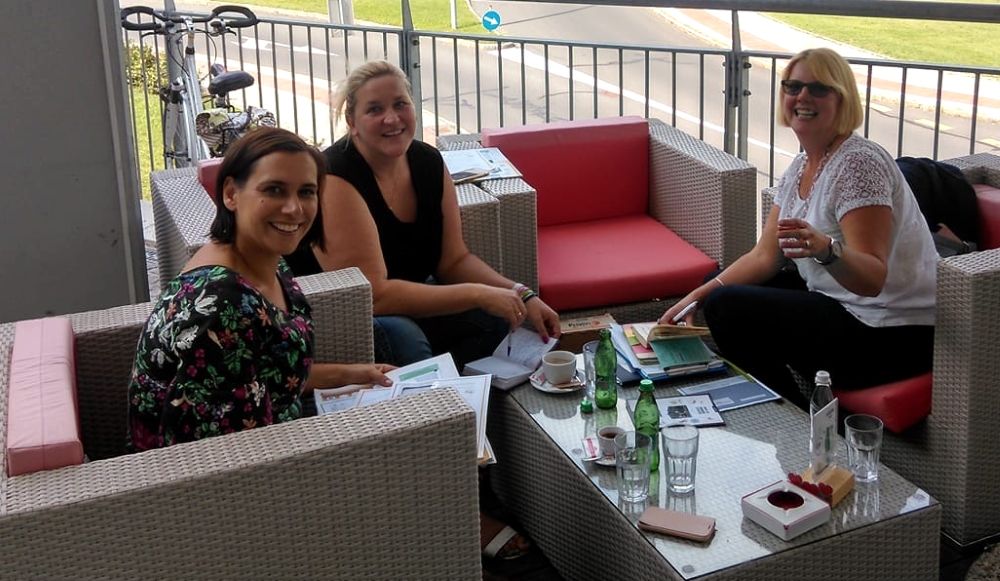
The team at Stride & Seek
For people who haven’t visited your website yet (in English and Slovene), can you talk me through the experience of doing a Mini Adventure?
A Mini Adventure features a hand drawn map of your chosen city or town leading you on a self-guided tour by visiting the markers on the map where a clue has to be found and solved. Discovering the place in a different and unique way. A story accompanies the adventure, usually loosely based on a legend or myth of that location which sets up the mission ahead.
It’s great fun for all ages. Kids love running around looking for the clues and adults get to exercise their brains as some of the clues are more challenging. And it’s good old-fashioned fun. We love the fact that our product brings people together, making memories and getting them away from screens and devices. It’s perfect if you have friends visiting and you want to show them the area or if you just want a day out getting reacquainted with a place.
It’s educational too as well as healthy (don’t let the kids know, though!) as we feature information about the landmarks our “Seekers” are seeing on their adventure. Our Mini Adventures thus make people more aware of what’s around them whilst exploring rather than just wandering around aimlessly on their own.
Some of the finer details of buildings, statues and monuments are often overlooked. One of our reviewers said of the Ljubljana Mini Adventure he did that although he grew up in Ljubljana, he discovered landmarks he’d never seen before. We include more than just the more popular sights, we love the unusual!

What are some things you’ve learned making these adventures?
I’ve learnt so much more about Slovenia from producing these Mini Adventures, not just from a tourist prospective either, because they are for locals and tourists alike. I have particularly enjoyed learning about the history and legends of our locations and get a real buzz out of writing the story that accompany the adventure. And we have quite a few locations already, even though we are just starting out. We currently offer Celje, Lake Bled, Ljubljana, Maribor, Murska Sobota, Ptuj, Piran and Bad Radkersburg. We have Škofja Loka, Graz, Budapest and Bratislava coming very soon. And in the next three months – Kranj, Velenje, Zagreb and Varaždin will be added to the catalogue. So, we are keeping very busy but we still have time for a chat if you see us out about, looking intently at statues with a notebook and camera in hand, be sure to say hello!
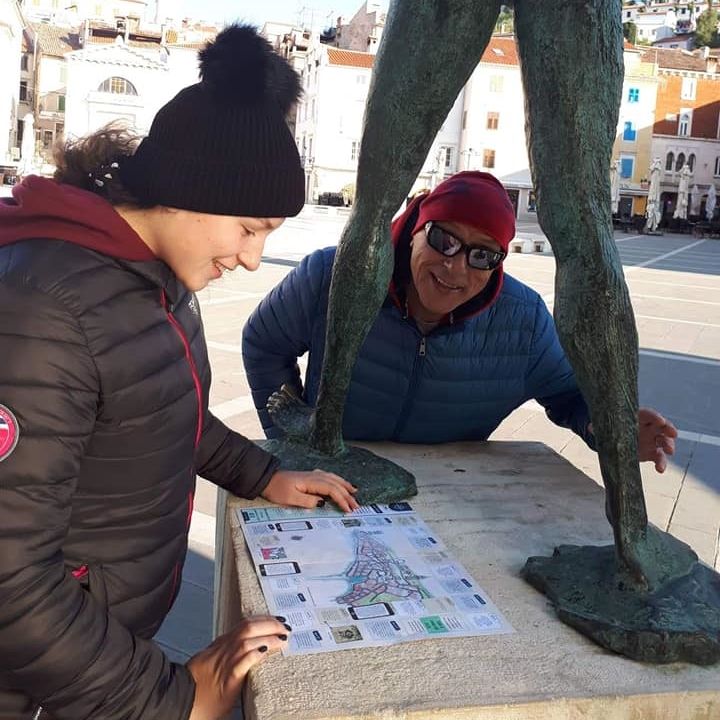
You can learn more about Stride & Seek Mini Adventures, and order a map of your own, at the project’s website, and you can also follow along on Facebook or Instagram. And if you'd like to share your story with our readers, then please get in touch at This email address is being protected from spambots. You need JavaScript enabled to view it.
A conversation with the woman behind the only restaurant with Lebanese food in Ljubljana
I’m a Trubarejva cesta partisan, decidedly on the side of this short street in downtown Ljubljana that still manages a mix of high and low, rich and poor. It starts in Prešeren Square with the fashion labels of Emporium, and ends with the graffiti-covered squat of Tovarana Rog. Most of the businesses are run by the owner / managers, and the diversity seen in its food offerings – European, African, Asian and Middle Eastern – is reflected in the people who live, work and play there.
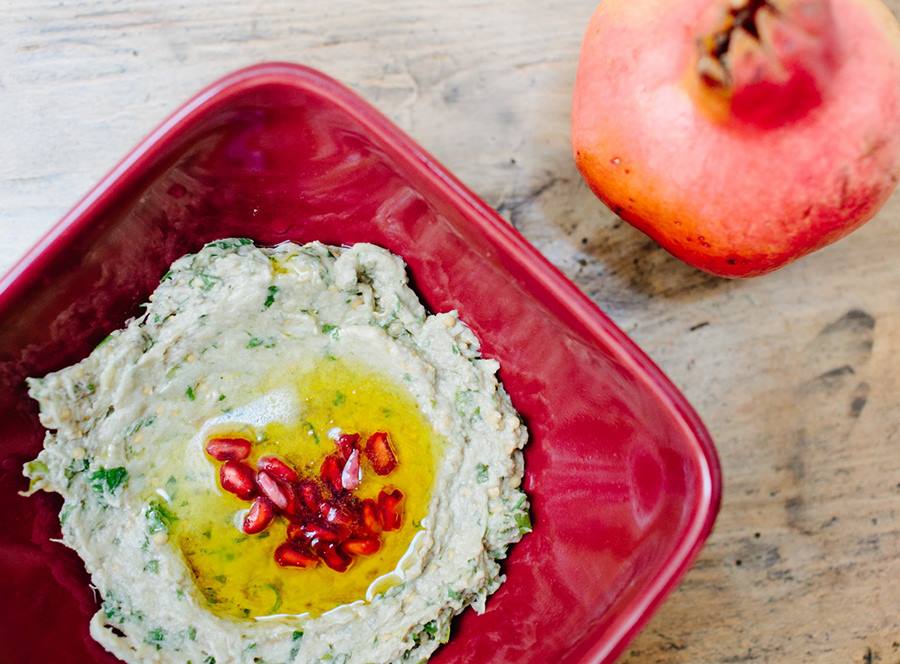
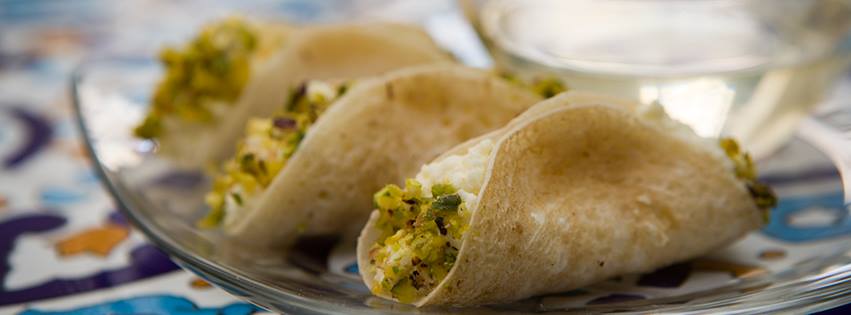
Having moved here after two decades in Asia I love the colour and activity of this street, the grassroots entrepreneurialism and its multi-racial, multi-ethnic character. For me, it’s a model of what a more vibrant Slovenia could be if it looked to the future and took the opportunities that seem to be left on the table for a more interesting, brighter and open life.
The subject of this edition of Meet the People is someone who exemplifies all of the good qualities I see here, and who has turned them into a successful business. It’s Alja Hafner Taha, who runs Libanonske meze in drugi užitki (Lebanese meze and other delights), a very popular restaurant that’s slightly hidden away in a basement, between a building that houses a sex store and another that offers marijuana growing supplies. Walking through the door and down the few steps feels like you’re moving down into another world, an effect aided by the décor, music and – of course – the aromas of a Middle Eastern kitchen, which you’ll have to imagine as you look at the pictures and read my interview with Alja…
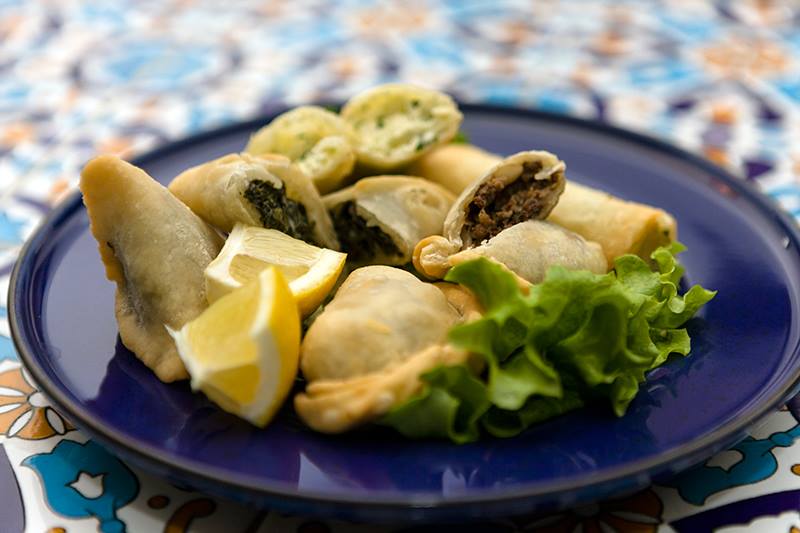

What’s your background?
My father is from Palestine, and he came here to study mechanical engineering in the 60s, then fell in love with a blonde, green-eyed Slovene, my mom, a Slovenian from Trieste.
A couple of years after I was born we left the country, and my dad was an engineer for various foreign companies in Arabic countries, and so for the next decade or so our lives revolved around his work. We started in Algeria, then Iraq, England, then Italy, then to Jordan, and then back here.
I went to eight schools in 11 years,. It’s hard to keep track of it all, but I went to English, French, Italian schools, although in an Arabic environment. I didn’t go to any Arabic school, but my father made sure his children had private lessons in the language.
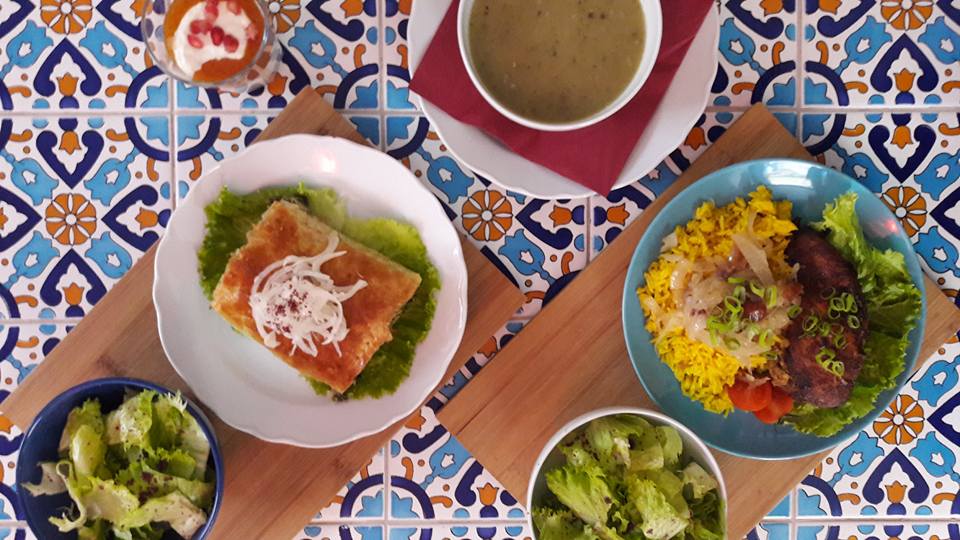
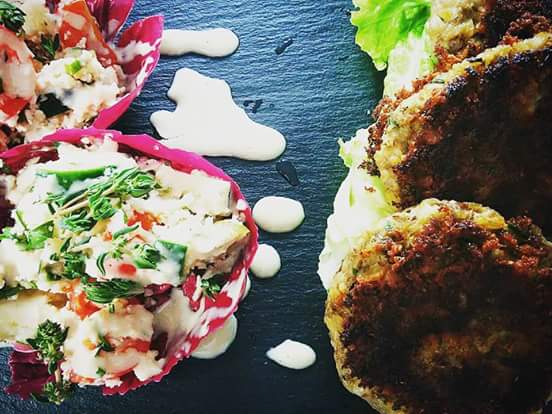
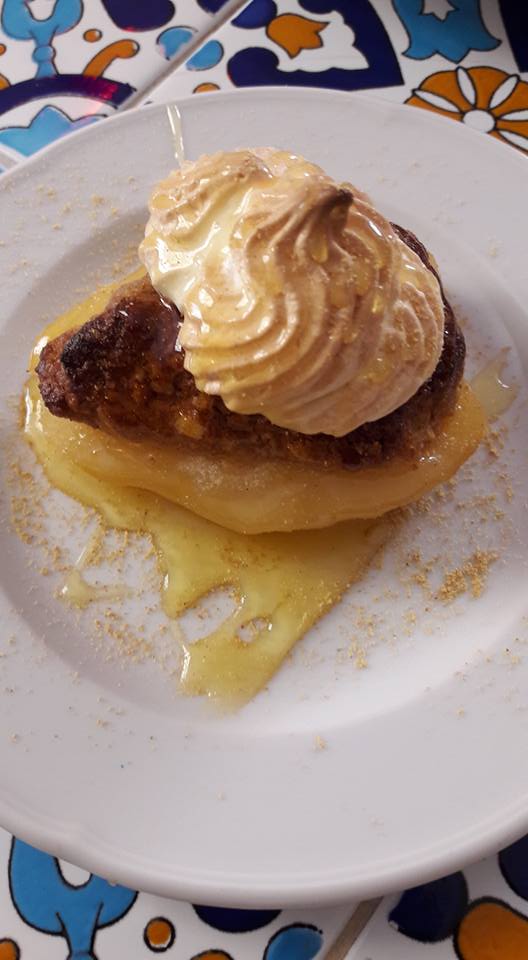
What language did you use at home?
At home I used to speak Slovene with my mom, Arabic with my dad, but since both of them spoke Slovene I eventually switched to that with my father.
How did you end up back in Slovenia?
I studied in Venice, then in the States. When I finished there I got an offer of an internship in America. Now I liked the university system in America - in Italy it was ridiculous, you were left to your own devices, and if you lacked discipline then it just dragged on forever, like in Slovenia –, but I really wanted to come back here for the lifestyle and the culture, which in the States I really didn’t like, and I did that in ‘97
I spent the first couple of years in Koper, then I moved to Ljubljana and worked in marketing, specifically in advertising.
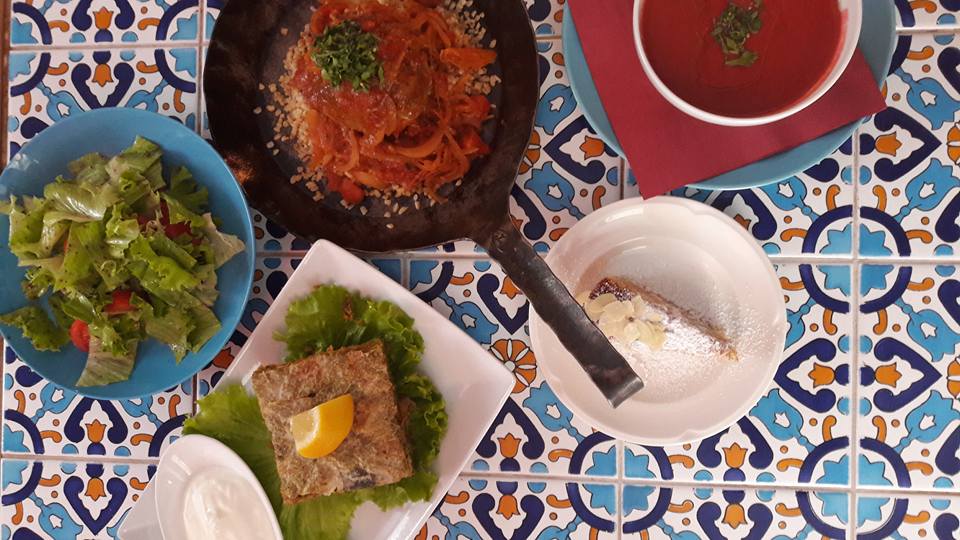
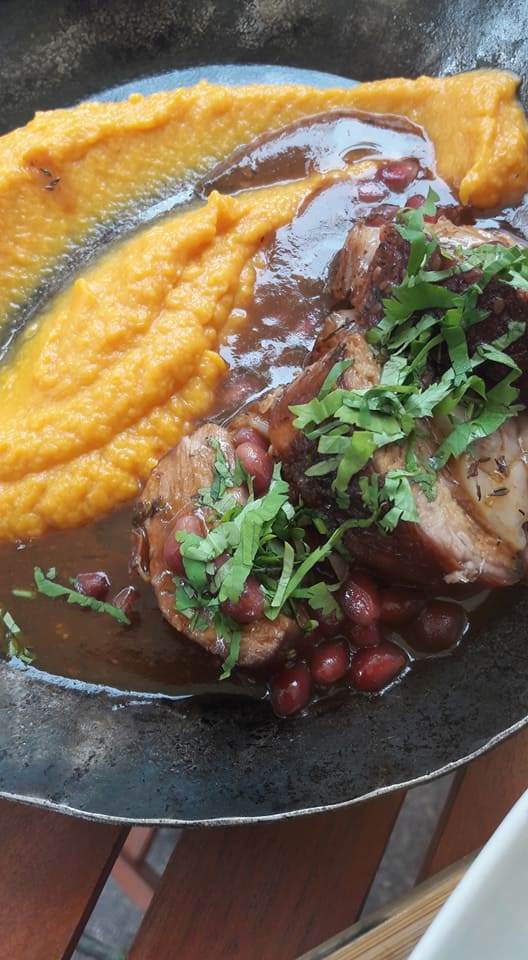
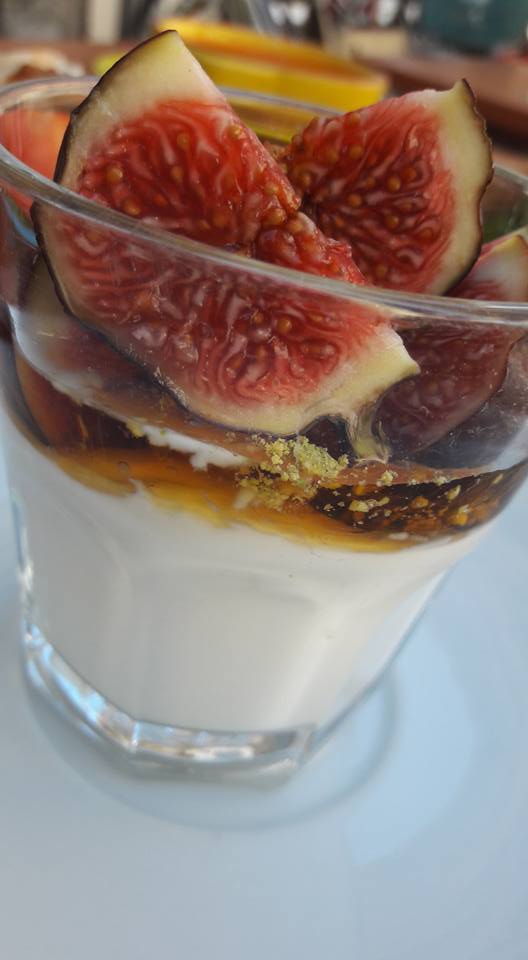
Did your international experience help with that?
I don’t know. The industry in Slovenia is as good as anywhere in Europe, so perhaps not, but certainly my background helped me be more flexible, adaptable, less surprised by things.
So how did you make the move to running a restaurant?
Well, I had a good career, but I wanted a change, and food – the hospitality part if it – was the thing I really felt a passion for. This is something from my upbringing, we always had a full house.
My mother was a great cook, so was my father. When we lived abroad our home was like a hub for dinner parties, garden parties, and I loved it, the whole thing, the preparation and so on, was very fulfilling, emotionally. It was also very eclectic, because we had my mother’s cooking, my father’s cooking, my mother cooking my father’s food, and vice versa, plus all the dishes we picked up on our travels.
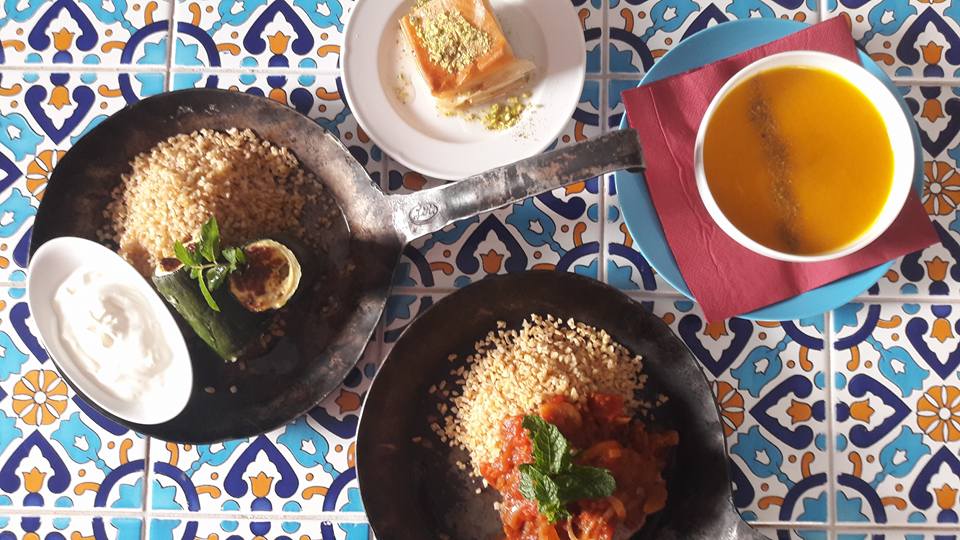
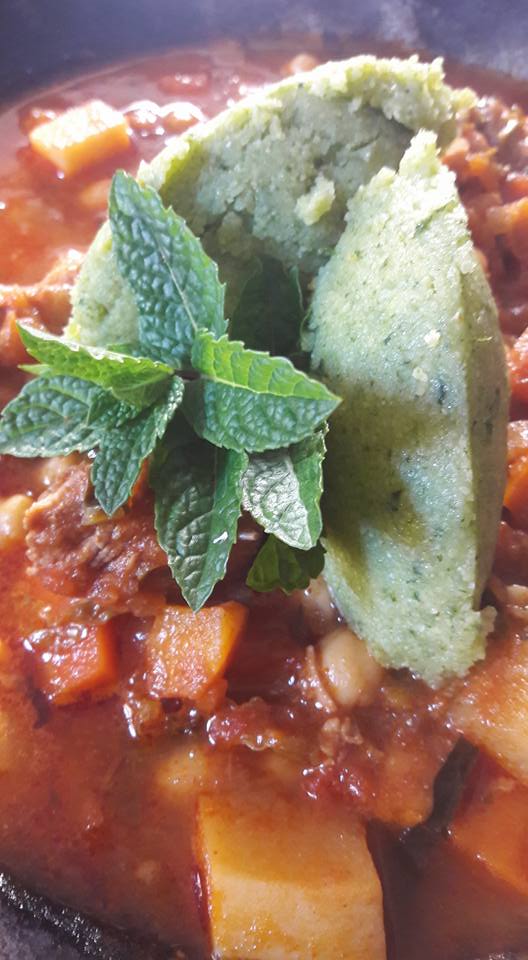

What about your cooking?
I didn’t really start cooking and enjoying it until my mid-20s, but then I really got into it. I’d have, say, 50 people over at my place.
Is it easier to do that with Middle Eastern food?
No, Slovene food’s actually easier to cook for big groups. The food that I cooked then, like the food we cook here, takes a lot of preparation, which is true for most Middle Eastern food. For example, the restaurant opens at 11:30, but work in the kitchen starts at 07:00, because we make nearly everything fresh here, including the pitta bread, every day. We don’t have a lot of space, we don’t have huge refrigerators and freezers to make it all days in advance. We make everything fresh every day, apart from harissa (a chili paste) and makdous, which is small pickled eggplants with walnut, and those are Lebanese, which we get from Vienna.
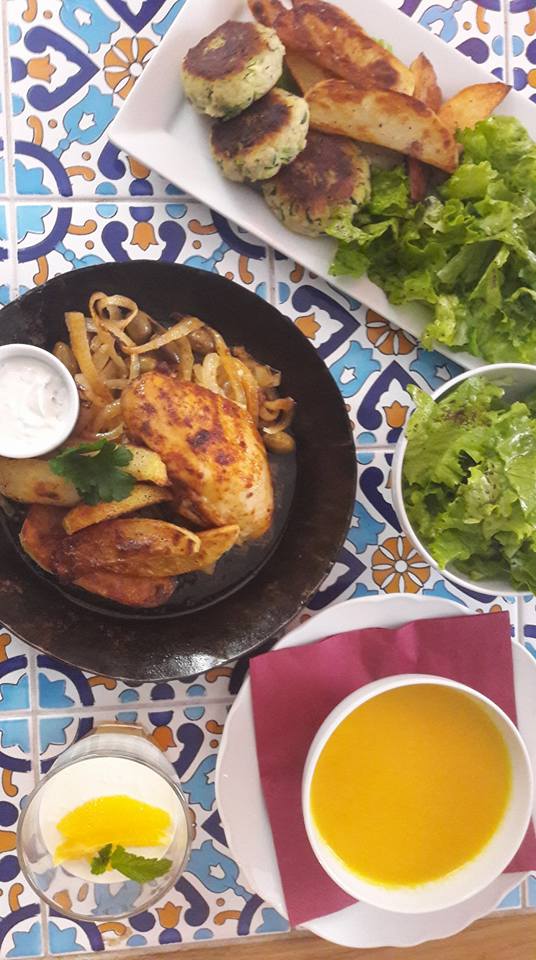
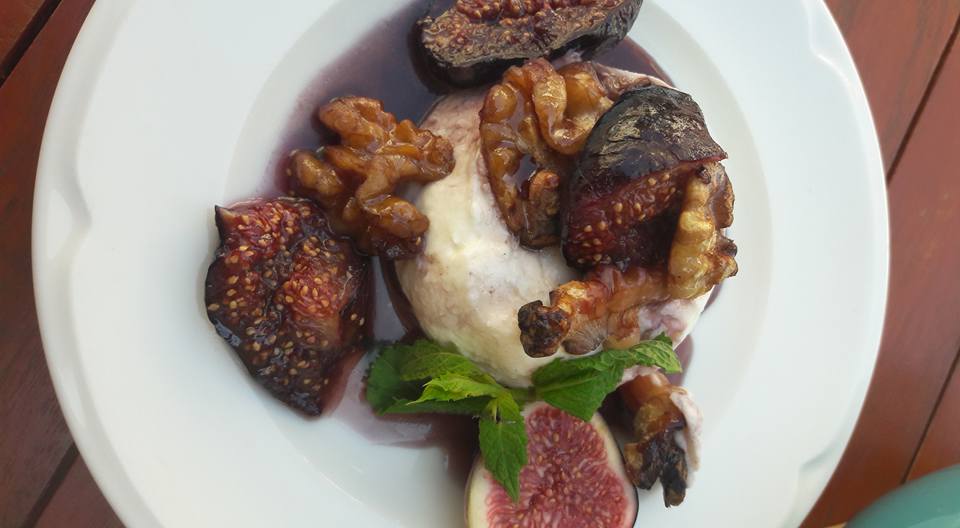
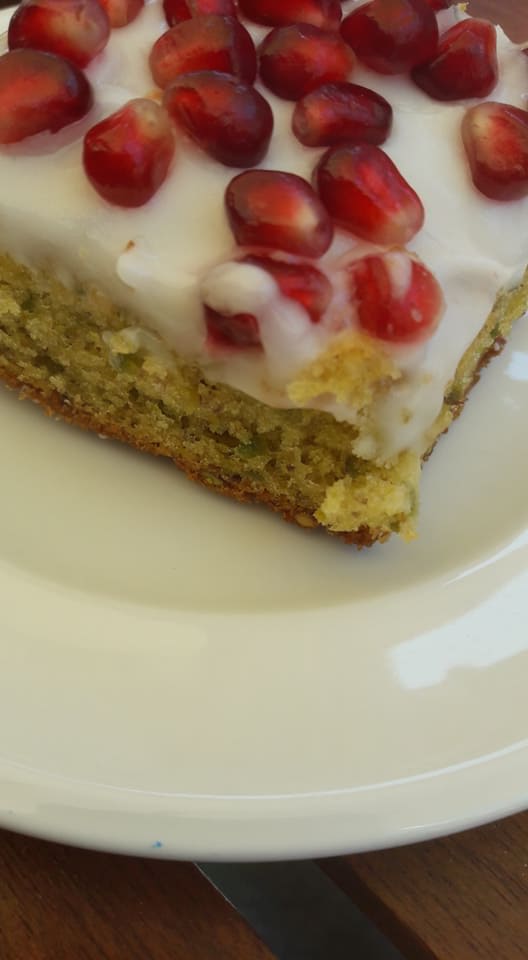
Is sourcing ingredients difficult?
At first it was difficult, but now it’s easy because we have all our contacts. If you want to make it at home you can buy the same stuff in Ljubljana, but if you’re a restaurant you need to get it closer to the source, and get it cheaper. For our vegetables and meat we get those from the market. We have a small scale butcher so we know where it comes from. For things like tahini, makdous, beer and wine we have a Lebanese importer in Vienna.
Authentic Lebanese food in Ljubljana
Do you make many changes to suit local tastes, or is this authentic Lebanese food in Ljubljana?
Being authentic is important to us, but the name Lebanese Meze & Other Delights means we have some room for food that’s not from the Levant. That said, the only things we had to adapt were the level of sourness in some dishes and the amount of garlic, which are both a lot higher in Lebanon. But if we get Lebanese guests we make sure they have a plate of lemons, or if, say, we have Palestinians we put some olive oil on the table.
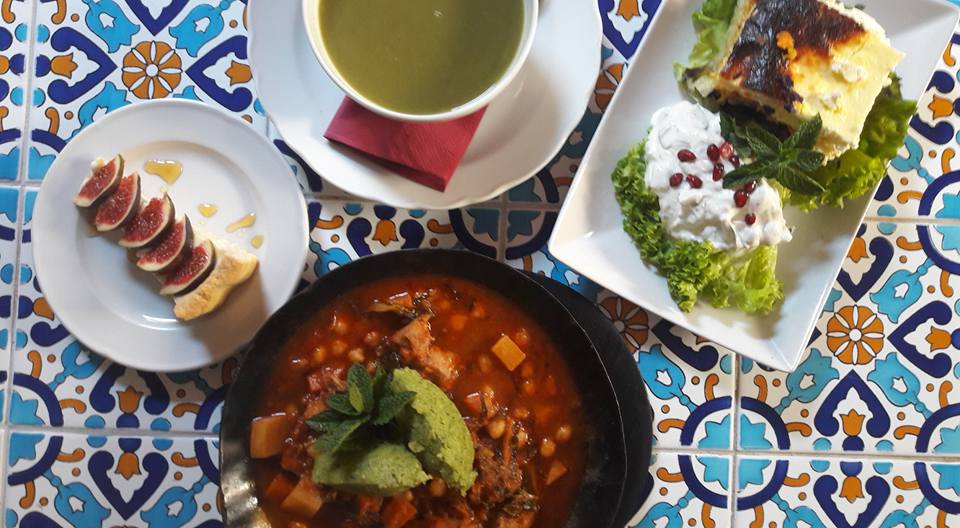
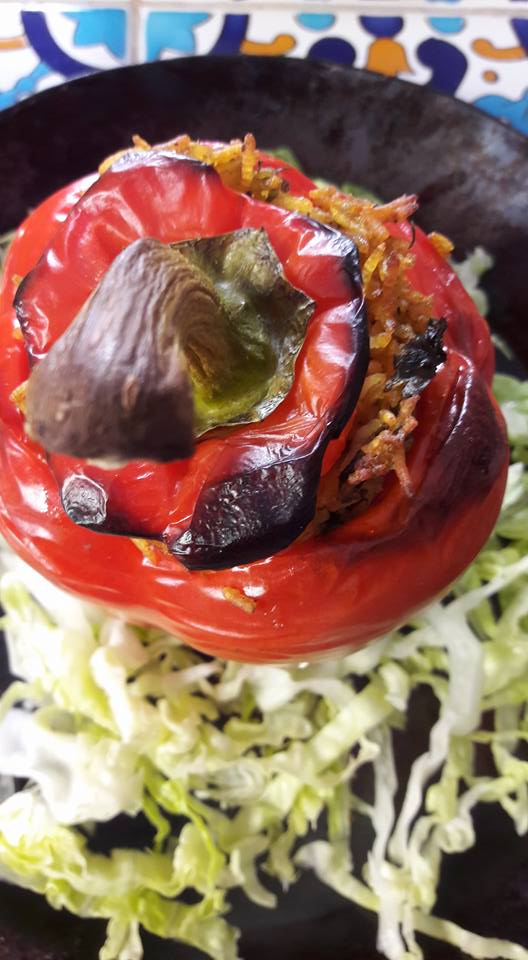
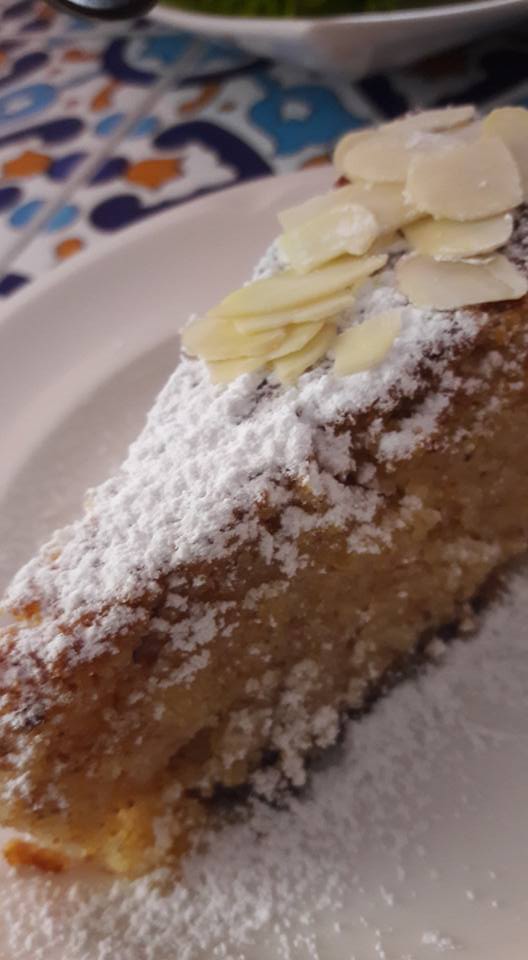
And has the menu changed much over the years?
The menu changes a little with the seasons, but in general it stays the same. Because I’d experimented with this food on friends for years beforehand, I was pretty confident about the dishes were going to have, so I had a strong vision, which is one we still follow.
Did your background in advertising come in useful?
One thing I learned in marketing was that the worst thing you can do is panic and make big changes in direction or the basic concept, plus my background in events management transferred pretty well to the restaurant business. That’s not say it was easy, because I had a lot to learn, but when there were problems or challenges I either had the skills needed to deal with them, or knew people who could help.
But the main problem in running a successful restaurant isn’t anything big, it’s consistency, its doing things extremely well day in day out. And that’s all in the details, not just the food but the way it’s served, the way the place looks, the music that’s played, the cleanliness, the energy that permeates the whole team.
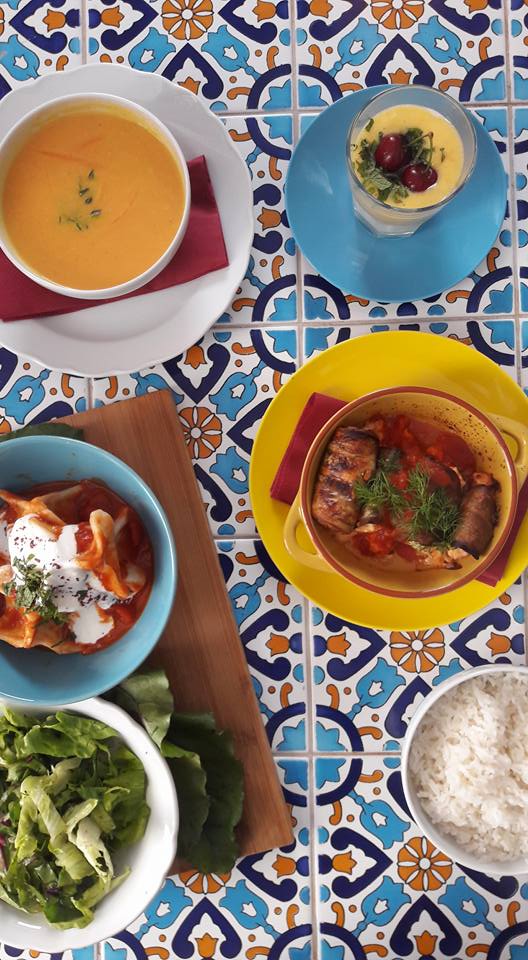
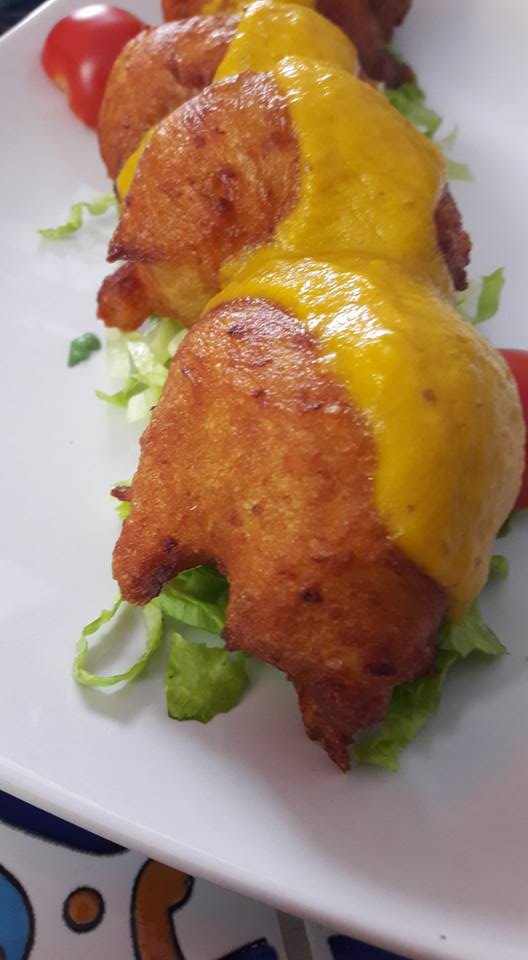
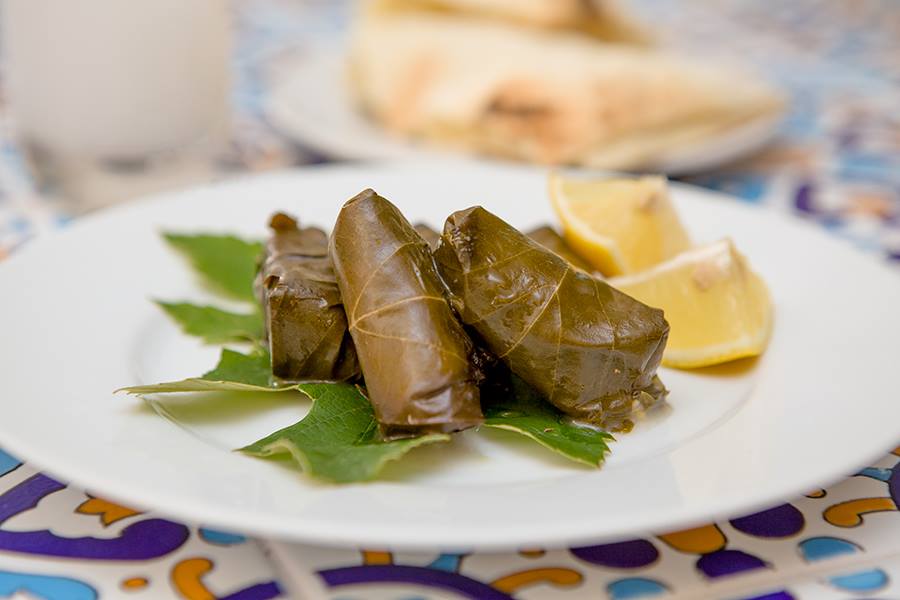
What about the staff here?
We’ve been very lucky with our team. At first we looked at bringing in a cook from abroad, but that involves a lot of paperwork, and is quite risky, because maybe they come here, you help set up a new life, and then they don’t like it. So we got a local guy, a great chef, Matjaž , who’s been here since day one. He manages a staff of Middle Eastern cooks, and the rest of the staff have all been the same for the last year and a half, so they really know what they’re doing. I help out sometimes, when needed, but managing a restaurant and cooking there too is the way to madness, it’s impossible.
Do you have any changes to the menu planned for winter?
Yes, we always change it a little with the seasons, with some heartier food in the winter, but not too much, as there’s always a danger you end up disappointing regulars, which we have a lot of, because you’ve taken a favourite off the menu. Like I said before, quality is paramount, but consistency is the key to success here.

If you’d like to try some of the Lebanese food shown here, which is highly recommended, then you can find Libanonske meze in drugi užitki at 45 Trubarjeva cesta, Ljubljana 1000. The opening hours are Opening hours: Tuesday - Thursday: 11:30 - 22:00; Friday, Saturday: 11:30 - 23:00; Sunday, Monday: Closed. The website is here, while the Facebook is here.
YOLO (You Only Ljubljana Once)
We recently promoted the upcoming improv course being run by IGLU Theatre, and while researching that we got in touch with Vid Sodnik, a man you might recognize from stage, screen and numerous billboards around the country, making his way in the small but vibrant Slovene arts scene. Our interest thus aroused, we sent a few questions about his work, and about some Slovenian cultural products that he recommends, and he was kind enough the reply.
Meet the People: Angelica Horvatic – Jungian Trauma Therapist, Completion Process Facilitator & More
We saw some promotion for a Jungian workshop in Ljubljana, as taught by Anglica Horvatic, from Croatia, and were interested in how she came to this work, and what the workshop would involve. We thus sent along some questions, and she was kind enough to send back some answers.
Davy Sims is a man of many parts, and some of those are based in Slovenia, where he advises on media strategies and writes about his love of Bled, wine, and the country in general. You can find out a lot more about Davy’s work at his website, but to learn more about the man behind it we sent him a few questions, which he was kind enough to answer.
First, a note on terminology. I recently went on Alternative Ljubljana’s first English-language LGBT tour, and when going back into the early years of the more open scene, back in the 1980s, the term used was LG, which later became LGBT. More recently this was extended to LGBTQ, LGBTQI, LGBTQI+ and so on, with more missing letters to be added, just like the rainbow flag has evolved to show different parts of the spectrum. However, as a personal preference I’m averse to long acronyms that have to be spelled out, and four letters, like BYOB or MDMA, seem about right, with a nice, percussive rhythm. So for the purposes of this article we’ll be using LGBT, and I’ll also be using the terms gay and lesbian rather freely, with the former being a catch-all term for all the colours of the rainbow.
We’ve interviewed a number of authors in the nine months since we launched, and today we meet with another, Mateja Klarič, who started out as a journalist at the national broadcaster before being forced out of her work, and then started a new career as a writer.


